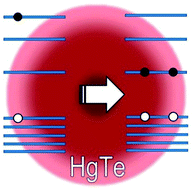Multiple exciton generation and ultrafast exciton dynamics in HgTe colloidal quantum dots†
Abstract
The investigation of sub-nanosecond exciton dynamics in HgTe colloidal

* Corresponding authors
a
School of Physics and Astronomy & Photon Science Institute, University of Manchester, Oxford Road, Manchester M13 9PL, UK
E-mail:
david.binks@manchester.ac.uk
Fax: +44 (0)1612751001
Tel: +44 (0)1612754234
b Department of Physics and Materials Science & Centre for Functional Photonics (CFP), City University of Hong Kong, Hong Kong S.A.R
c Institute of Electronics Microelectronics and Nanotechnology, Lille, France
The investigation of sub-nanosecond exciton dynamics in HgTe colloidal

 Please wait while we load your content...
Something went wrong. Try again?
Please wait while we load your content...
Something went wrong. Try again?
A. Al-Otaify, S. V. Kershaw, S. Gupta, A. L. Rogach, G. Allan, C. Delerue and David. J. Binks, Phys. Chem. Chem. Phys., 2013, 15, 16864 DOI: 10.1039/C3CP52574K
To request permission to reproduce material from this article, please go to the Copyright Clearance Center request page.
If you are an author contributing to an RSC publication, you do not need to request permission provided correct acknowledgement is given.
If you are the author of this article, you do not need to request permission to reproduce figures and diagrams provided correct acknowledgement is given. If you want to reproduce the whole article in a third-party publication (excluding your thesis/dissertation for which permission is not required) please go to the Copyright Clearance Center request page.
Read more about how to correctly acknowledge RSC content.
 Fetching data from CrossRef.
Fetching data from CrossRef.
This may take some time to load.
Loading related content
